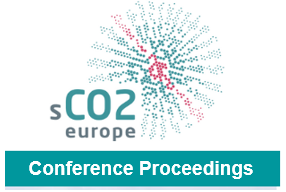Numerical analysis of a centrifugal compressor operating with supercritical CO2
This study investigates the performance of a centrifugal compressor stage operating with supercritical CO2. The candidate geometry comprises a channel diffuser and is based on main dimensions of a test-loop compressor operated by Sandia National Laboratories. A non-dimensional performance curve is derived through three-dimensional RANS calculations performed with an in-house compressible CFD solver and is compared to experimental data as well as a meanline analysis that is conducted applying a single-zone modelling approach, including internal and external loss models. Within the CFD simulations, real gas thermophysical properties of carbon dioxide are assessed through an accurate and efficient tabulation procedure, the Spline-Based Table Look-Up Method (SBTL), which is optimised for the density-based solver architecture. The conducted RANS calculations show an ideal head rise of up to 41%through the channel diffuser compared to an ideal head assessment considering the impeller. The applied meanline methodology provides good agreement with the impeller performance characteristics derived from RANS calculations over the entire investigated flow range. Except for flow coefficients exceeding values of φ ≈ 0.043, where an abrupt decrease of the ideal head recovery is identified in the CFD assessments, which is not resembled by the meanline diffuser model, also satisfactory agreement of the meanline stage performance characteristics with the CFD results is obtained. Hence, applicability of the corresponding meanline loss models for sCO2 compressor analysis is indicated.
Vorschau

Zitieren
Rechte
Nutzung und Vervielfältigung:
Dieses Werk kann unter einer Creative Commons Namensnennung 4.0 Lizenz (CC BY 4.0)
Creative Commons Namensnennung 4.0 Lizenz (CC BY 4.0)
genutzt werden.
